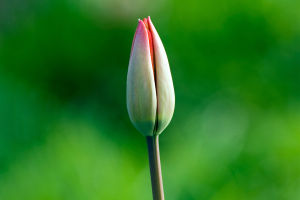Campanula patula, commonly known as the spreading bellflower, is a captivating and resilient wildflower that graces meadows, roadsides, and grasslands with its delicate beauty.
This charming plant, a member of the Campanulaceae family, is celebrated for its enchanting star-shaped blossoms and its ability to thrive in various environments.
Let's explore the characteristics, habitat, cultivation, and significance of Campanula patula, shedding light on why this modest flower holds such a special place in the hearts of garden enthusiasts and nature lovers alike.
Campanula patula is a biennial or perennial herb that typically grows to a height of 30 to 60 centimeters. The plant's most distinctive feature is its bell-shaped flowers, which can range in color from pale lilac to deep violet. These blossoms, measuring about 2 to 4 centimeters in diameter, have a characteristic five-lobed corolla that flares outwards, giving them a star-like appearance. The flowers are borne on slender, branching stems, and the plant's overall form is loose and airy, allowing it to blend seamlessly into natural landscapes.
The leaves of Campanula patula are lanceolate to ovate, with a slightly toothed margin. The basal leaves form a rosette at the plant's base, while the stem leaves are alternately arranged and gradually reduce in size towards the top. The foliage is generally bright green, providing a fresh and vibrant backdrop to the striking flowers.
Campanula patula is native to Europe and parts of Asia, where it is commonly found in open habitats such as meadows, grasslands, roadsides, and forest clearings. The plant prefers well-drained soils and can thrive in both full sun and partial shade. Its ability to adapt to a range of soil types, from sandy to clayey, makes it a versatile addition to various landscapes.
In the wild, Campanula patula often grows in areas with low to moderate fertility, which helps reduce competition from more aggressive plant species. This resilience and adaptability have enabled it to establish itself in diverse environments, from lowland areas to mountainous regions.
For gardeners interested in cultivating Campanula patula, the plant is relatively easy to grow and requires minimal maintenance. It can be propagated from seeds, which should be sown in the spring or early summer. The seeds need light to germinate, so they should be sown on the soil surface and kept moist until germination occurs, usually within two to three weeks.
Once established, Campanula patula is drought-tolerant and requires only occasional watering. The plant benefits from well-drained soil and does not require heavy fertilization. In fact, excessive nutrients can lead to overly vigorous growth, which may detract from the plant's natural charm and reduce flowering.
To encourage a prolonged blooming period, deadheading spent flowers is recommended. This practice not only promotes continuous flowering but also prevents the plant from self-seeding excessively, which can lead to unwanted spread in the garden.
Campanula patula plays a vital role in its native ecosystems by providing nectar and pollen for a variety of pollinators, including bees, butterflies, and hoverflies. Its open, star-shaped flowers are particularly attractive to these insects, making it an important plant for supporting biodiversity.
In addition to its ecological value, Campanula patula holds cultural significance in various regions. In traditional European folklore, bellflowers are often associated with fairies and enchantment, symbolizing gratitude and humility. The delicate beauty of Campanula patula has inspired poets, artists, and gardeners throughout history, cementing its place as a beloved wildflower.
Campanula patula, the spreading bellflower, is a testament to the beauty and resilience of nature. Its delicate, star-shaped flowers and ability to thrive in diverse habitats make it a valuable addition to both wild and cultivated landscapes. Whether admired in its natural setting or nurtured in a garden, this enchanting flower continues to captivate and inspire, reminding us of the simple yet profound wonders of the natural world. By appreciating and cultivating Campanula patula, we can contribute to the preservation of biodiversity and the enduring charm of our natural environment.


